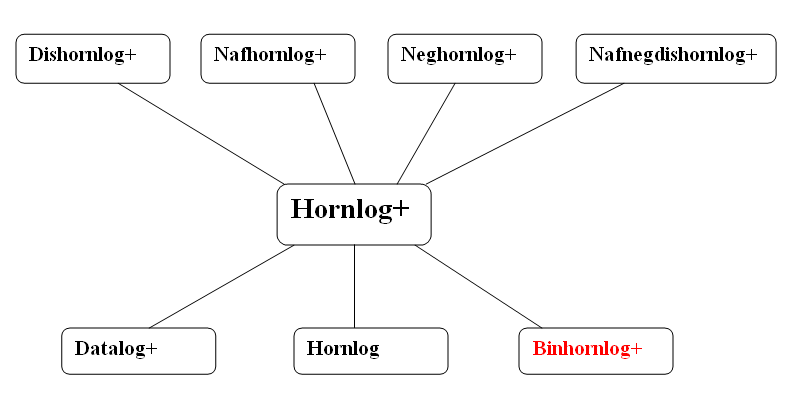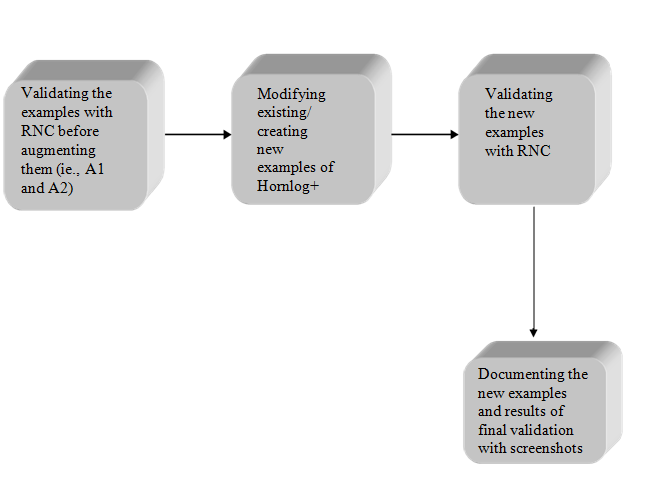Introduction:
Deliberation RuleML incorporates a family of sublanguages, commencing with Datalog, Hornlog, and other Derivation Rules, and advancing to FOL and beyond. The focused part of Deliberation RuleML 1.01 is the capability to amalgamate one or more of the following Datalog defining extensions which jointly elucidate Datalog+:
- Existential Rule: In this rule, the "then" part of a rule has existentially quantified variables, as needed for description logics, F- logic and PSOA RuleML, Rule-Based Data Access, etc.
- Equality Rule: In this rule, the "then" part of a rule is the "Equal" predicate, as needed for user-defined/'semantic' equality in logics with equality and functional logic programming and this was already allowed in RuleML 1.0.
- Integrity Rule: In this rule, the "then" part of a rule is falsity, as an appropriate way to express negative integrity constraints.
This project is developed with the guidance of Dr.Harold Boley and advisor Dr.Tara Athan who provided their valuable comments and suggestions at different stages.
Objective:
The main objective of our project is to construct a test case suite of RuleML 1.01 documents. There are three approaches to the construction of Hornlog+ test rulebases that we will combine in our project: (see the diagrams below)
A1. By augmenting the current examples of Datalog+ rulebases with functions.
A2. By augmenting the current Hornlog examples with the three defining extensions.
A3. By creating new Hornlog+ examples (from scratch)

Hornlog+ with smaller and larger sublanguages
(Binhornlog+ is in red : not- (yet-)-anchor languages are highlighted as such)
Project Work Flow
Methodology:
Firstly, to create lower counter examples, we will remove some features from the Hornlog+ examples and make it to Datalog+, Hornlog and Binhornlog+. The corresponding schema are created by using the MYNG 1.01 tool that is developed by Dr. Tara Athan. We do this by clicking the desired checkbox according to the sublanguages used. The generated schema is then used to validate the example.
Then, we will add features to develop Hornlog+ example to make it Dishornlog+, Nafhornlog+, Neghornlog+ and Nafnegdishornlog+ examples. These are the upper counter examples which falls under the parent category of RuleML 1.01.
Finally, we will document the new examples and counter-examples with their validation results and screenshots.
Tools used:
MYNG 1.01:
http://deliberation.ruleml.org/1.01/myng/
XML editor: oXygen
RNC validation tool:
